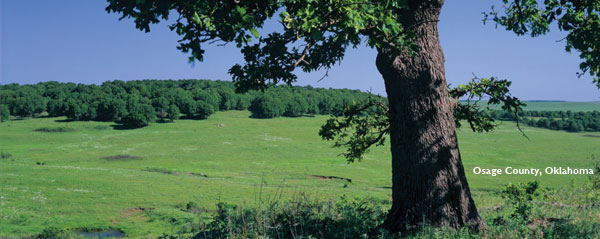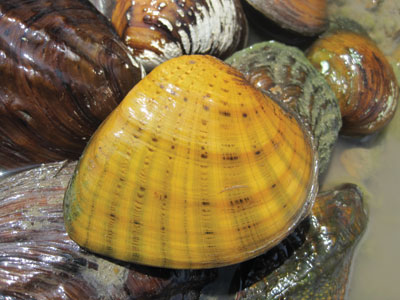|
back Home Cross TimbersGateway from forest to prairie Biodiversity of Oklahoma series |
|
Butterfly Mussel
Bassariscus astutus
|
© Tim Menard, USFWS
|
Phylum: Mollusca Family: Unionidae (freshwater mussels) The Butterfly mussel is a small to medium-sized freshwater mussel that is sexually dimorphic. Female specimens tend to be more inflated or swollen in appearance and generally measure less than 2.75 inches (70 mm) in length. Male Butterfly mussels are more compressed and larger, usually measuring less than 4.3 inches (110 mm) in length. The unique shell is triangular in shape. The periostracum (outer shell surface) is dull yellow or greenish and may be marked with broken green rays. These broken rays look like rows of "V"-shaped or rectangular blotches. The nacre (inner surface of the shell) is white. Some of the specific details about the complex life cycle of this mussel are not currently known, but the life history of Ellipsaria lineolata is presumed to be similar to related species. Male Butterfly mussels release sperm into the swift current of a river. Sperm enters females through siphon-like regions and fertilization of eggs occurs within female shells. These fertilized eggs develop into special larva called glochidia. Glochidia continue to develop and are released into the water column when fully matured. The parasitic glochidia must find and attach to the gills or fins of the appropriate host fish to complete development. The Green Sunfish (Lepomis cyanellus) and Freshwater Drum (Aplodinotus grunniens) have been identified as suitable host fish. Larvae transform into juvenile mussels on the fish and then release from the host to find a suitable substrate, often the gravel or sand bottom of a river. Adult mussels are typically found attached to the sand or gravel bottom of swiftly flowing rivers. Adult mussels are filter feeders and usually feed upon plankton and detritus from their aquatic environment. Butterfly mussels bring water from their habitat into their shells through specialized regions that are similar to the true siphons of clams. The water is then filtered over its gills and food particles are trapped and eventually digested. The Butterfly mussel has a very broad range that covers the Alabama River system in the Southeast and Mississippi River drainages throughout the Midwest . From the University of Georgia Museum of Natural History Georgia Wildlife Web. |
|
back to species list |
PDF of all species profiles
|

